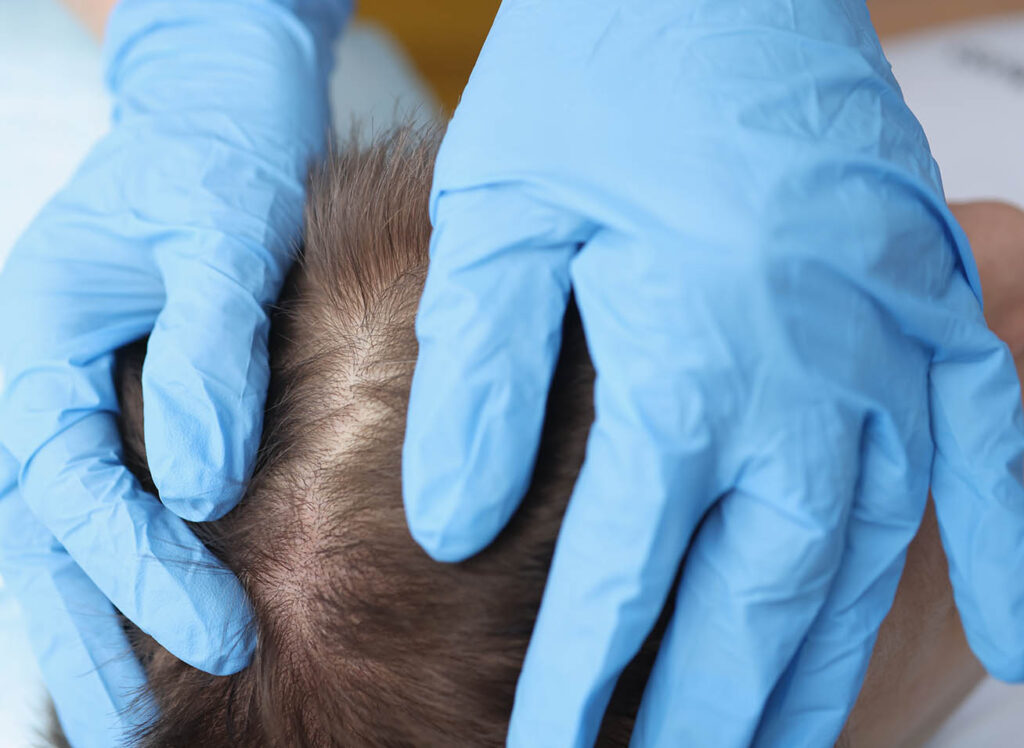There are two main types of hair transplant methods, each with its unique methodology and benefits:
1. Follicular Unit Strip Surgery (FUSS)
Follicular Unit Strip Surgery (FUSS) involves the surgical removal of a strip of skin from the donor area, usually the back of the scalp, where hair is typically denser. After the strip is removed, the surgeon meticulously closes the incision with stitches, which can be removed after a few days.
Once the area is closed, the harvested strip is placed under a microscope, allowing the surgeon to carefully dissect it into tiny follicular units. These units, which contain one to several hair follicles, are then prepared for implantation into the recipient area where hair is thinning or absent.

Advantages of FUSS:
- High Yield of Grafts: FUSS can produce a large number of grafts in a single session, making it ideal for patients requiring significant coverage.
- Cost-Effectiveness: This method is often less expensive compared to FUE, as it requires less time in the operating room.
- Ideal for Larger Transplants: FUSS is particularly beneficial for individuals with extensive hair loss who need multiple grafts to achieve desired fullness.
Considerations: The downside to FUSS is the linear scar left in the donor area, which may be noticeable, especially with shorter hairstyles. Additionally, the recovery period may be longer compared to FUE due to the stitches and the need for the scalp to heal.
2. Follicular Unit Extraction (FUE)
Follicular Unit Extraction (FUE) is a more advanced technique that eliminates the need for a linear incision. Instead, the surgeon uses a tiny punch tool, typically ranging from 0.7 to 1.0 mm in diameter, to extract individual hair follicles directly from the donor area. Each follicle is removed one at a time and then meticulously implanted into the recipient site.
Advantages of FUE:
- Minimal Scarring: While some scarring can occur, it consists of small dot-like marks that fade significantly over time and are much less noticeable than the linear scar from FUSS.
- No Stitches Required: FUE does not require stitches, leading to a quicker and more comfortable recovery period for patients.
- Faster Recovery: Patients typically experience less discomfort and can return to normal activities within a few days post-procedure.
- Flexibility in Hair Styles: Since FUE leaves minimal scarring, individuals can wear their hair shorter without the fear of visible scars.
Considerations: FUE requires a high level of skill and precision from the surgeon, and the procedure can take longer than FUSS, especially when a larger number of grafts are needed. As noted in a 2019 article, while FUE may demand more time and expertise, the results can be exceptional when performed by an experienced surgeon.
Choosing the right hair transplant methods
Both techniques can lead to natural-looking results and are effective for treating hair loss. The choice between FUSS and FUE often depends on individual factors, including the extent of hair loss, hair type, desired outcomes, and personal preferences regarding scarring and recovery time.
During a consultation, your surgeon will evaluate your specific situation, discuss your goals, and help you determine which method aligns best with your needs.
Ultimately, both FUSS and FUE offer viable solutions for restoring hair and enhancing self-confidence, enabling individuals to regain a fuller head of hair and improve their quality of life.

